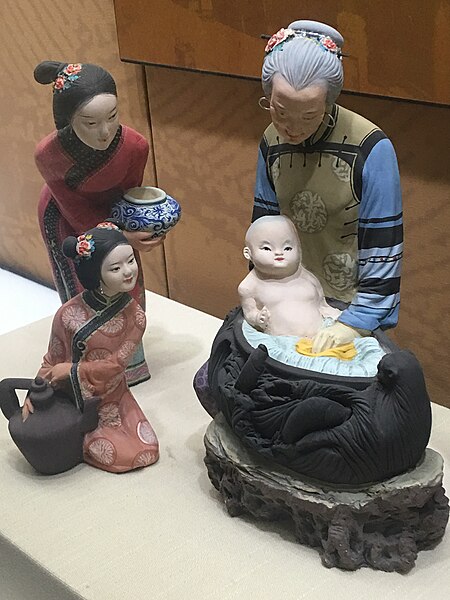Michel Benoist was a Jesuit scientist who served for thirty years in the court of the Qianlong Emperor during the Qing dynasty, known for his architectural and landscape designs of the Old Summer Palace. Along with Giuseppe Castiglione, Benoist served as one of two Jesuit advisors to the Qianlong Emperor, and transformed parts of the Old Summer Palace into what historian Mark Elliott calls an "imitation of Versailles or Fontainebleau."
An 18th century engraving depicting the water clock designed by Benoist featuring the twelve animals of the Chinese zodiac in front of The Hall of Calm Seas (Haiyantang).
Ruins of the north facade of Xieqiqu, one of the pavilions to feature the fountains constructed by Michel Benoist. The photograph was taken in 1873 by German photographer Ernst Ohlmer.
The Qianlong Emperor, also known by his temple name Emperor Gaozong of Qing, personal name Hongli, was the fifth emperor of the Qing dynasty and the fourth Qing emperor to rule over China proper. He reigned officially from 1735 until his abdication in 1796, but retained ultimate power subsequently until his death in 1799, making him one of the longest-reigning monarchs in history as well as one of the longest-lived.
Portrait by Giuseppe Castiglione
Figurine of the three-year-old Qianlong Emperor having a bath. Artefact in Yonghe Temple, Beijing.
The young Qianlong Emperor as Prince Bao, Metropolitan Museum of Art
Inauguration Portraits of Emperor Qianlong and Empress, Cleveland Museum of Art.






